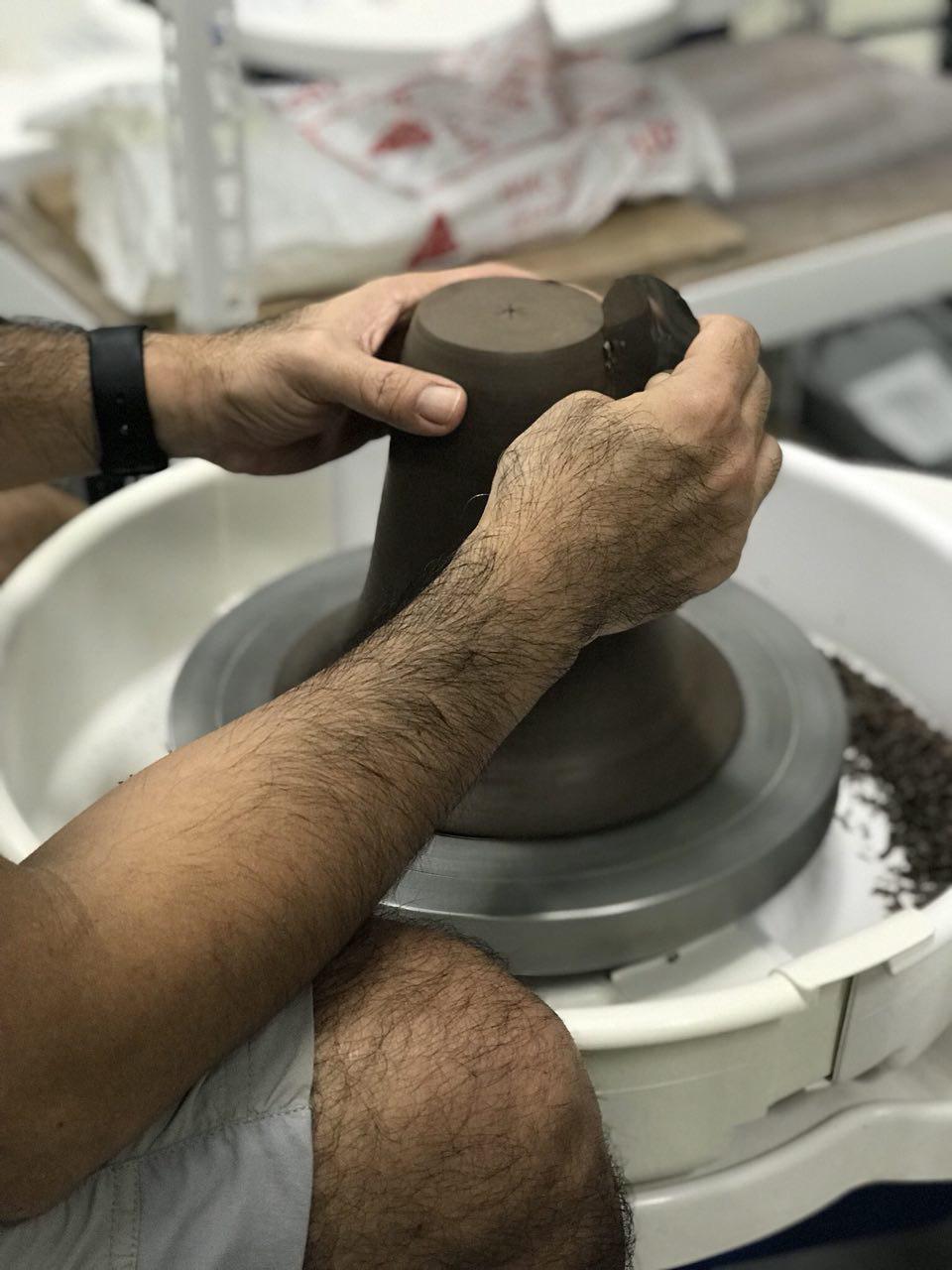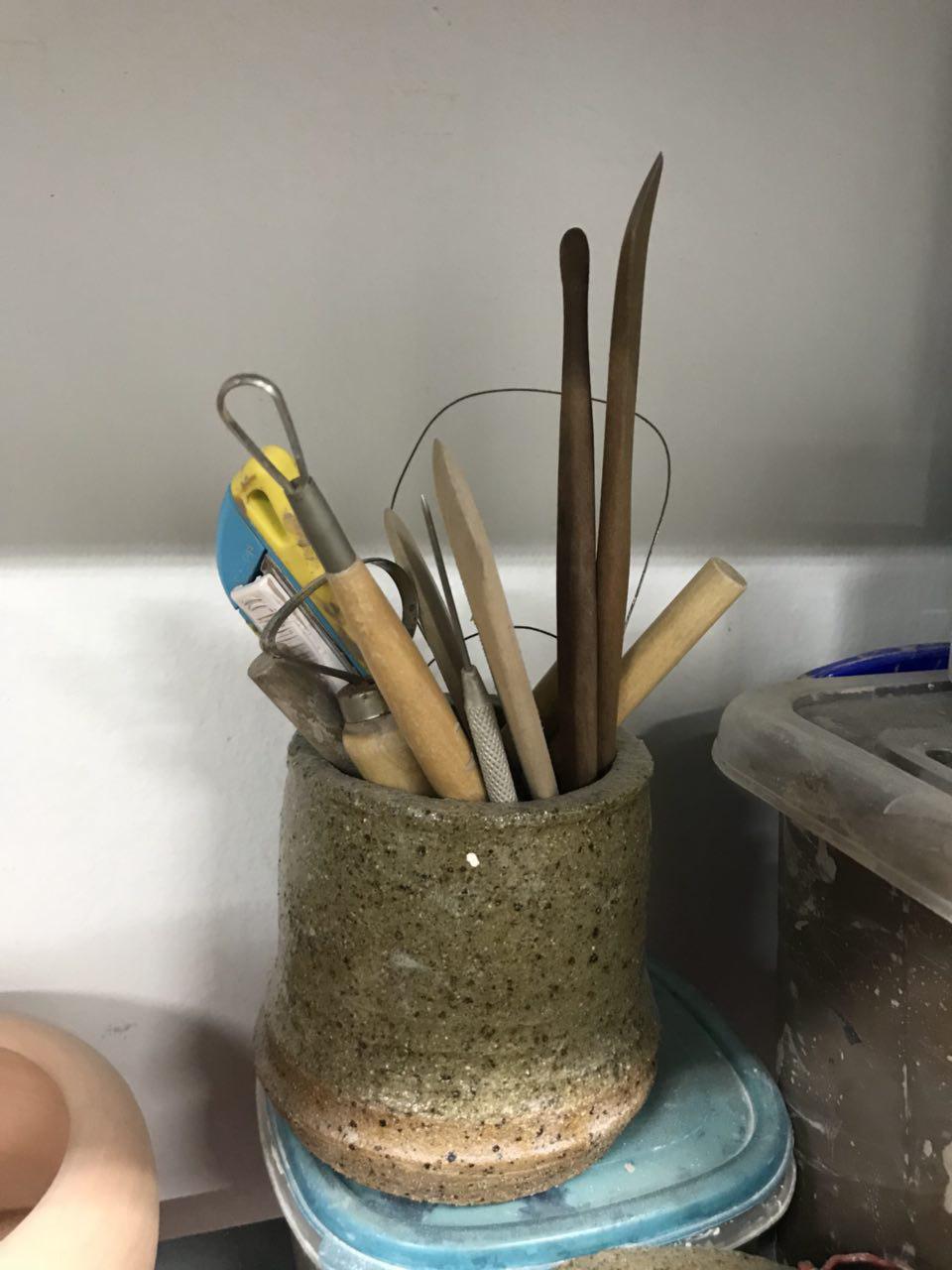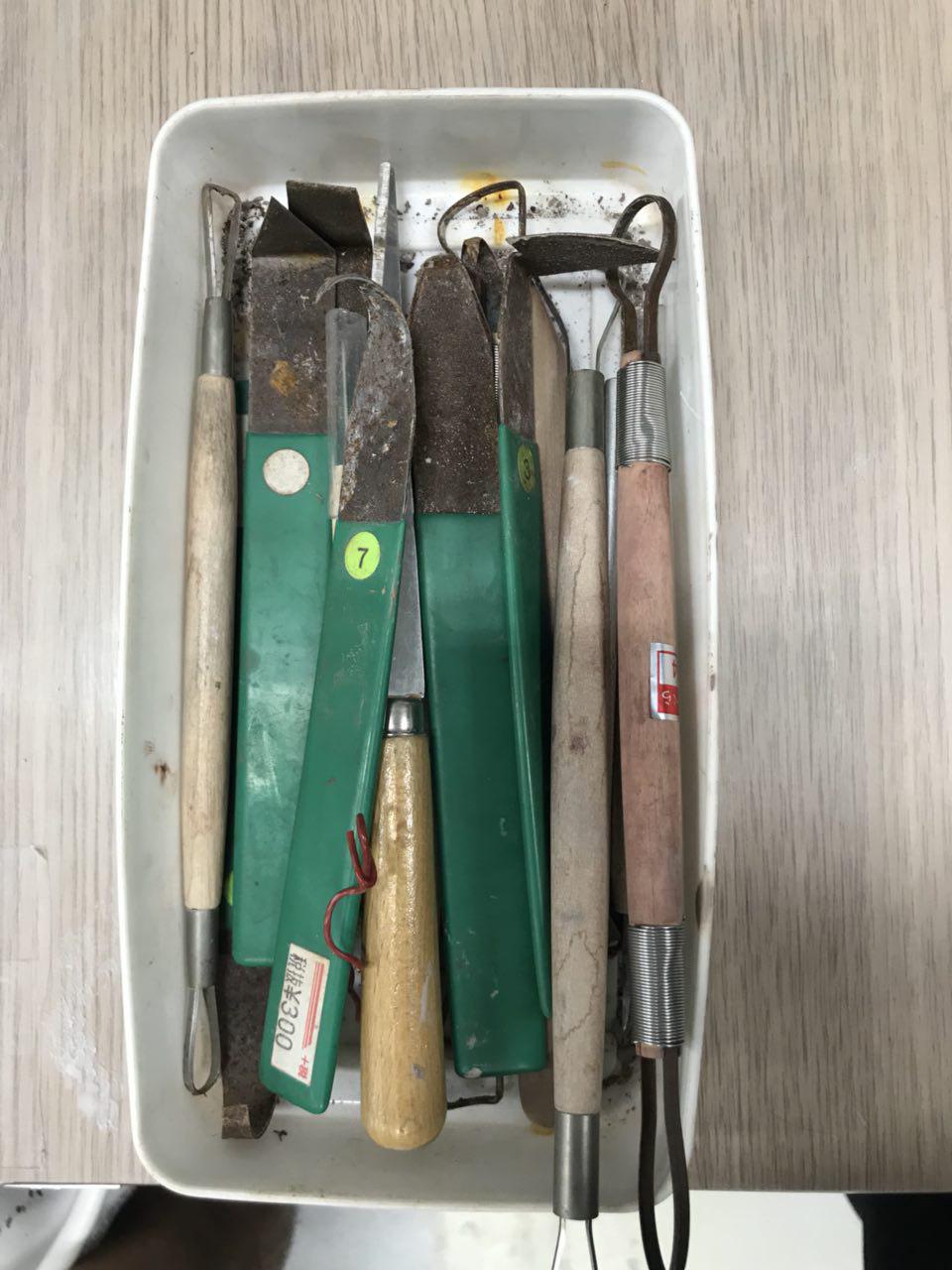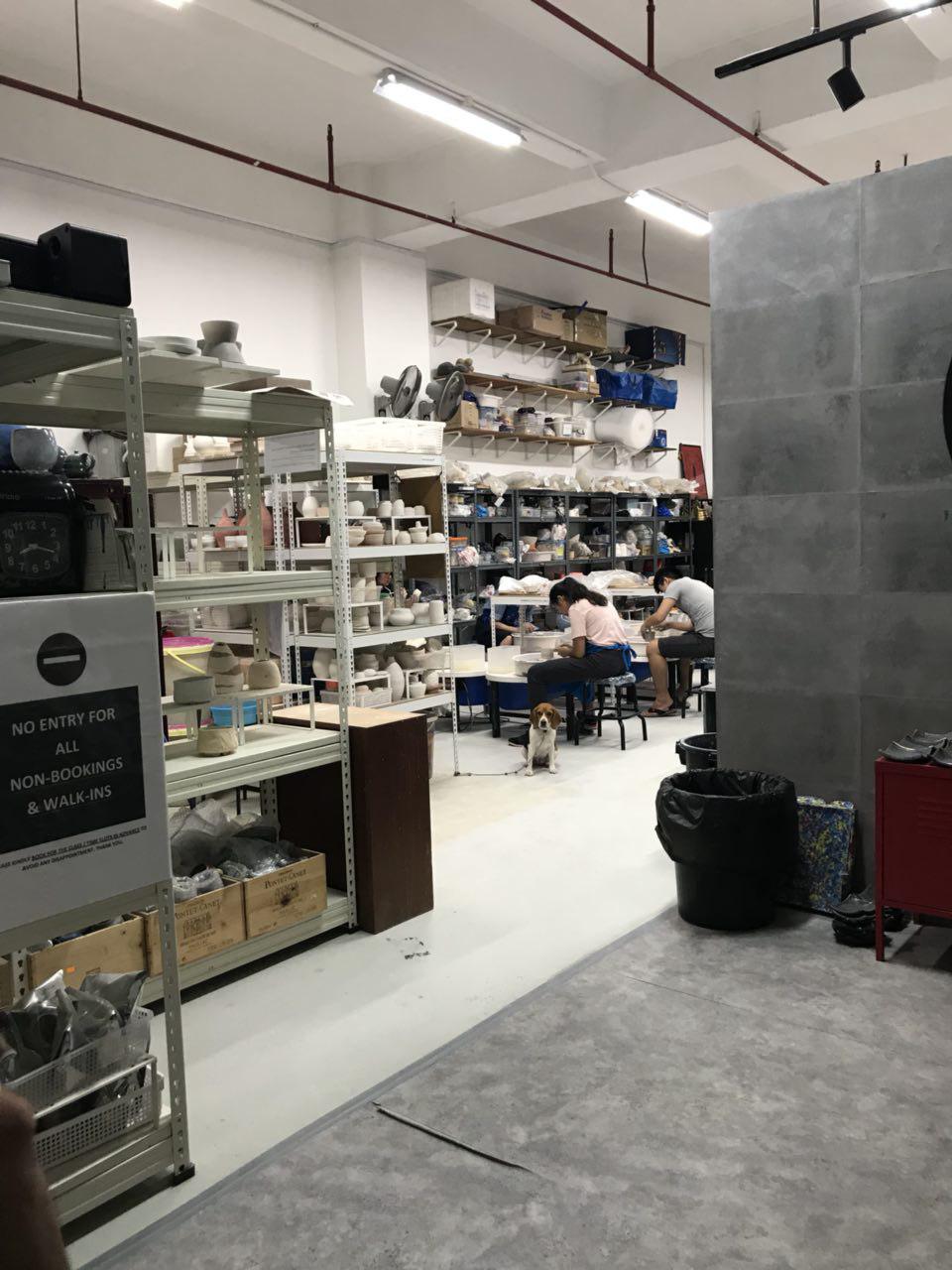Ceramics and pottery have been around since the Neolithic period. Moving into the 21st century, it has definitely evolved into a much more refined form of art. The techniques, process and tools alike have also evolved to become more sophisticated. Additionally, the uses of ceramics/pottery pieces have also progressed from solely practical uses to artisan pieces.
Process Documentation
The practitioner I followed was giving a lesson that involves making wheel thrown ceramics.
Steps:
- Wheelthrowing – this first step is using clay to create the shape that is desired.
- Trimming is the second stage that Alvin (the practitioner) went in depth into explaining. This process is to transform the piece into different shapes and sizes and can also alter the texture.
- When the trimming is complete, the third step would be allowing the piece to dry before it goes forbisque firing. Letting it set would allow the moisture in the clay to evaporate. At this stage, it would be bone dry.
- The next step would be bisque firing. Here, the clay piece is put into the the film and the clay is dehydrated to prepare it for glazing.
- Glazing (to add colour/texture to the piece)
- Following this, it goes into the kiln again for a second fire before completion.

Tools Used
At Alvin’s workshop, he went into detail on step 2 which is trimming and here are the tools that are used at this step.
- Ribbon Trimming tools
- Hook Trimming tools
- Scraper


Worksite Documentation
A ceramic artists’ workplace is definitely not portable. This is due to the high amount of heavy equipment that is used such as the pottery wheel and also the kiln. Additionally, to carry smaller yet bulky items like the glazes would be a hassle. The worksite also houses a large number of artwork both finished, in process and also the actual clay itself. The worksite also requires a water outlet and many power sockets to power the kiln and potter’s wheel.

Pain Points
At the worksite, there were other ceramic practitioners. They said that the difficulties of practicing ceramics in Singapore is that it is not a super affordable or accessible practice. Also, the transition from a newbie to a master takes many years and also a lot of patience.
In the technical aspect, creating “successful” clay works also involves plenty of trial and error – what you expect may not always be what you get. For example, in the process of throwing, you may end up with another shape that you have not anticipated. Or when you glaze, the colour and texture might be different after coming out from the kiln.
Also, precision and steady hands are needed while doing refinement works like trimming. This is difficult and only comes with hours of practice.
